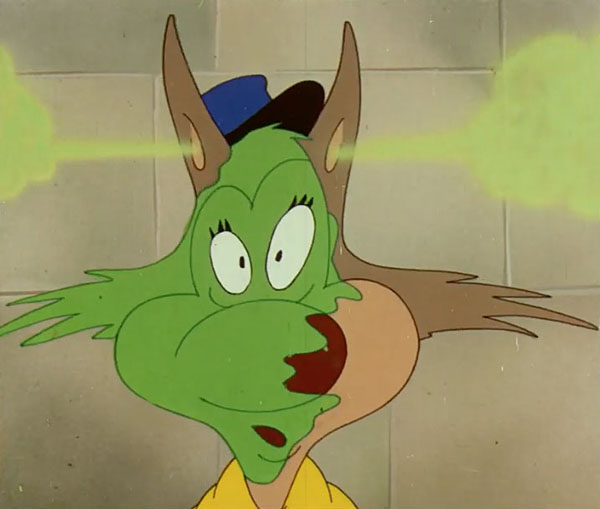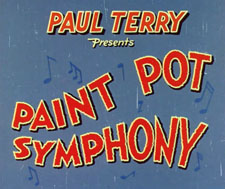Happy 2020 everyone! Welcome to a new decade of cartoon rescue and rediscovery!

Over the last week, I’ve had my head seriously buried in the Rainbow Parade, volume 1 cartoons here. The final versions on all but one are done as of this writing; it’s nice to see this project finally coming to fruition.
The Flip the Frog volume 1 set is following closely on the heels of the Rainbow set; these two sets getting wrapped up (and their volume 2s well in progress) frees up time to work on the many other projects in the pipeline. There’s so many things to share this year.
Over the school break, I’ve been thinking a lot about the overall goals for Thunderbean in the coming period of time. As a small producer, we’ve been lucky enough to have some opportunities to license a few things as well as work with a lot of archives. Watching the various Thunderbean projects add up to additional opportunities is really exciting. I’ve love to report that these efforts have led to being able to have Thunderbean a full-time venture, but not quite yet, but I can see it though at this point.
These last 10 years have seen a lot of things being restored that seemed like pipe-dreams for all of us that love cartoons. The possibilities even this year seem excellent to me- but I always hope we can play at least a small role helping to see even more things.
It seems to be that preservation exists so that material is there when someone wants to experience it again, both commercially and non-commercially. Then, in that way, the time it sat in storage and any care it required now was worth it, even if there isn’t enough interest in that particular material to make it into something that would be considered a commercially viable. That particular aspect is a moving target anyway, always.
Of course, the great saving grace of film as an industry is that it attracts a lot of people that love film. In that way, there’s always a pretty good possibility that at least *some* things that don’t pass the commercial viability standard of the moment *will* see the light of day through the care of people internally as well as externally. If there is anything I want to concentrate on for future projects, it’s tapping into this particular and unusual aspect of the industry in order to get things done. The possibilities are always interesting.
Of course, the Columbia/Mintz cartoons and the Terrytoons are some of the least represented studios in more recent years. There’s always a hope for me that it will change – sooner than later.

And, with that, onto today’s random cartoon! It’s a good one to start on for the year, since it’s about the refurbishing something – although I’d never use the green-screen green color they use…
 Paint Pot Symphony (1949) is an interesting attempt to try a wordless, musical format that seemed to work for successful shorts from other studios. You can really see the storyboards while watching this particular short. Some of the background work is especially nice on this short.
Paint Pot Symphony (1949) is an interesting attempt to try a wordless, musical format that seemed to work for successful shorts from other studios. You can really see the storyboards while watching this particular short. Some of the background work is especially nice on this short.
Although it’s not Academy Award material, it’s an enjoyable little outing – and I’m sure you’ll recognize some of Connie Rasinski’s and Jim Tyer’s fun animation. One has to wonder how these films would look had they had higher budgets.
This transfer of Paint Pot Symphony was scanned from a 35mm IB Technicolor print. It must have had some showings in the UK since it has the British ‘U’ certificate at the beginning. Have a great week everyone!



 Steve Stanchfield is an animator, educator and film archivist. He runs Thunderbean Animation, an animation studio in Ann Arbor, Michigan and has compiled over a dozen archival animation DVD collections devoted to such subjects at Private Snafu, The Little King and the infamous Cubby Bear. Steve is also a professor at the College for Creative Studies in Detroit.
Steve Stanchfield is an animator, educator and film archivist. He runs Thunderbean Animation, an animation studio in Ann Arbor, Michigan and has compiled over a dozen archival animation DVD collections devoted to such subjects at Private Snafu, The Little King and the infamous Cubby Bear. Steve is also a professor at the College for Creative Studies in Detroit.






















Ah yes, good old Zampa Overture, also featured in Mickey’s “The Band Concert”, Popeye’s “Shakespearean Spinach”, and Andy Panda’s “The Bandmaster”, to name just three off the top of my head. Like a lot of overplayed light classics that were popular a century ago, it’s gone out of fashion. In a long career as an orchestral musician, I have never played it at all, not even once.
The hand of Scheib is evident in the arrangement, yet I cannot help but notice the full string section in the orchestra. At some point, no doubt for budgetary reasons, Terrytoons ditched the strings in favour of a few extra ranks of saxophones. (All those Terrytoons saxes give me the creeps; it’s like being trapped in Hell with Guy Lombardo ringing in a New Year that never comes.) Did they stop using orchestral strings all at once, or was it a gradual process of attrition?
You know, if somebody put out a complete set of Terrytoons in chronological order, I could figure this out for myself….
Thanks Steve.
“PPS” is a good rebuttal when someone suggests Terrytoons are terrible cartoons.
does anybody know the reason why this particular terrytoon seems to have been staged for a 1.19:1 movietone ratio? were any other terrytoons at the time also staged this way? (it doesn’t look like that’s the case…)
Terrytoons occasionally rise above their usual mediocrity— another good one is “The Power Of Thought” with Heckle and Jeckle.
But for the most part, the studio’s output is exactly what Paul Terry once admitted: “Walt Disney is the Tiffany’s of the cartoon business, and I am the Woolworth’s.”
I do like his honesty. There’s a lot to be said for people who have no illusions.
Was it common practice in the 40s to paint over beautiful brick skyscrapers in hideous colors? Actually it’s an interesting, fun cartoon. I’m not aching for a Terrytoons collection. But it’s not bad……………………………………..for Terrytoons.
The three “jerks” had previously been introduced in “A Truckload of Trouble” (released in October 1949); this was their second appearance.
There’s also the sequence lifted directly from CLOCK CLEANERS, with the tall cat nearly falling off ledges with a bucket on his head, animated by Carlo Vinci.
At least it has the iconic “splash” SFX, without which no Terrytoon is complete.